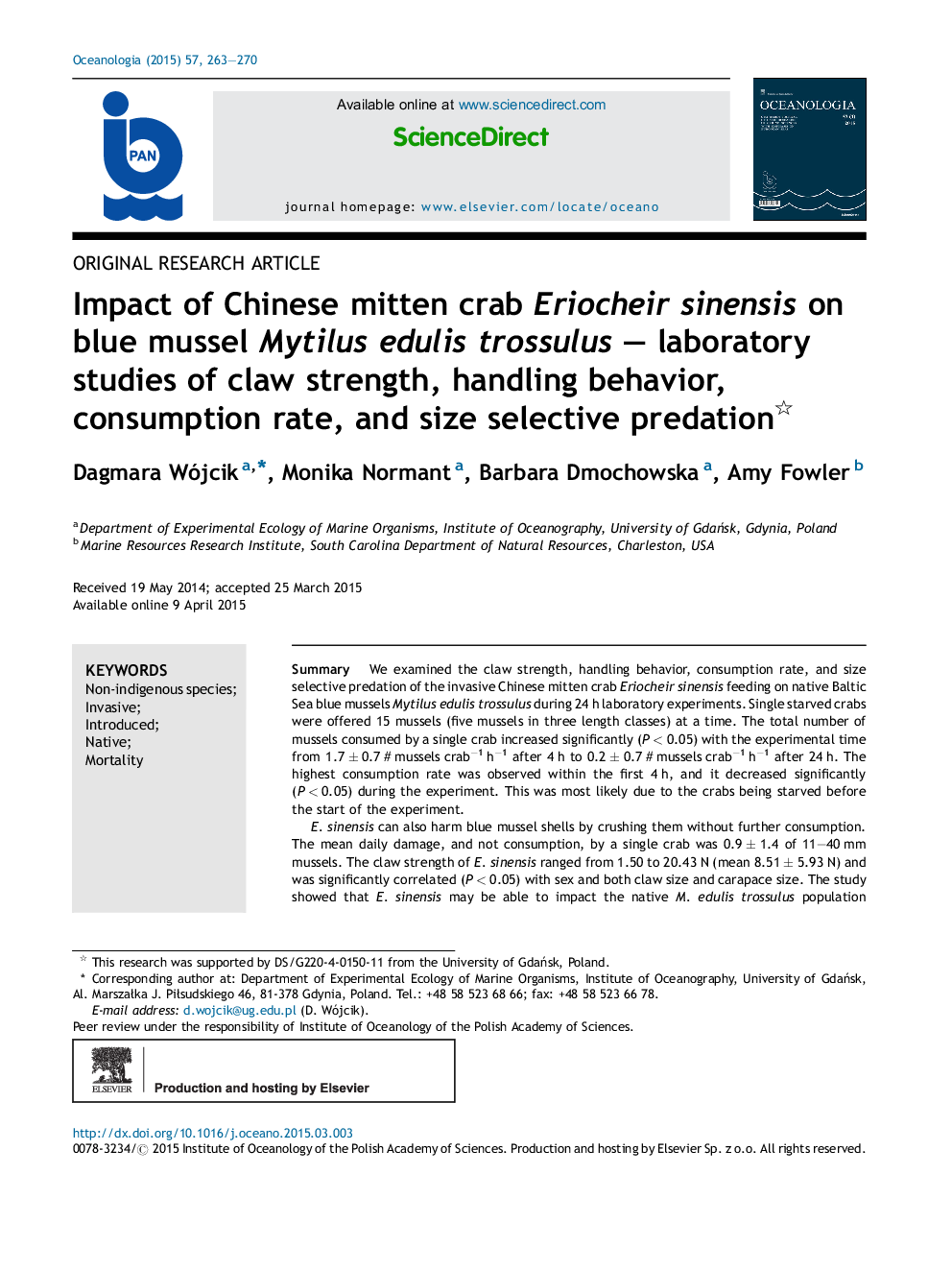| Article ID | Journal | Published Year | Pages | File Type |
|---|---|---|---|---|
| 2069725 | Oceanologia | 2015 | 8 Pages |
SummaryWe examined the claw strength, handling behavior, consumption rate, and size selective predation of the invasive Chinese mitten crab Eriocheir sinensis feeding on native Baltic Sea blue mussels Mytilus edulis trossulus during 24 h laboratory experiments. Single starved crabs were offered 15 mussels (five mussels in three length classes) at a time. The total number of mussels consumed by a single crab increased significantly (P < 0.05) with the experimental time from 1.7 ± 0.7 # mussels crab−1 h−1 after 4 h to 0.2 ± 0.7 # mussels crab−1 h−1 after 24 h. The highest consumption rate was observed within the first 4 h, and it decreased significantly (P < 0.05) during the experiment. This was most likely due to the crabs being starved before the start of the experiment.E. sinensis can also harm blue mussel shells by crushing them without further consumption. The mean daily damage, and not consumption, by a single crab was 0.9 ± 1.4 of 11–40 mm mussels. The claw strength of E. sinensis ranged from 1.50 to 20.43 N (mean 8.51 ± 5.93 N) and was significantly correlated (P < 0.05) with sex and both claw size and carapace size. The study showed that E. sinensis may be able to impact the native M. edulis trossulus population abundance in the coastal Baltic waters either through direct predation or indirect mortality by damaging (crushing) the shell.
